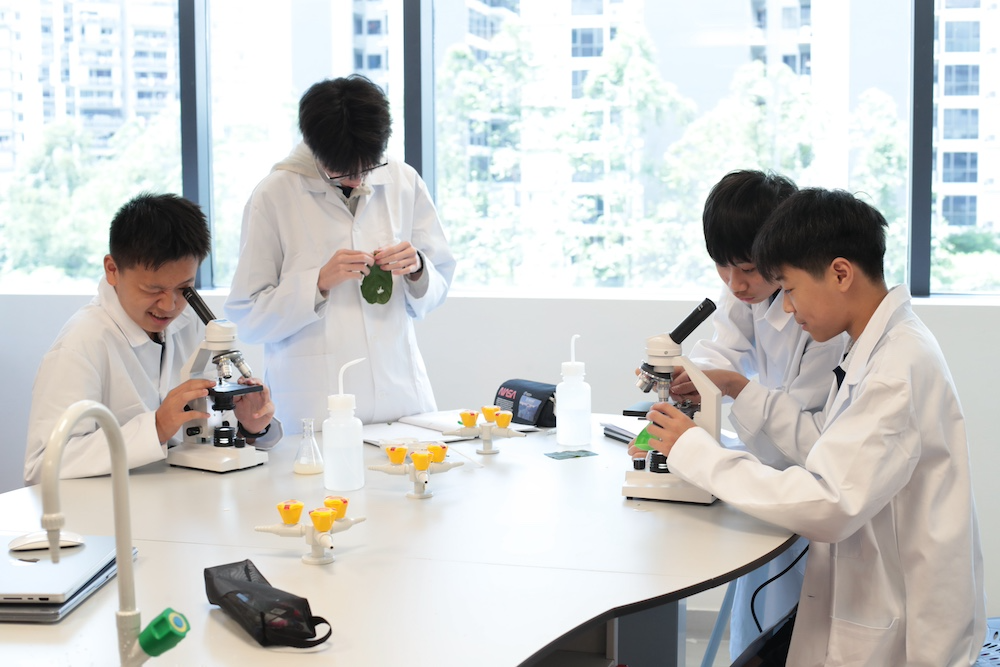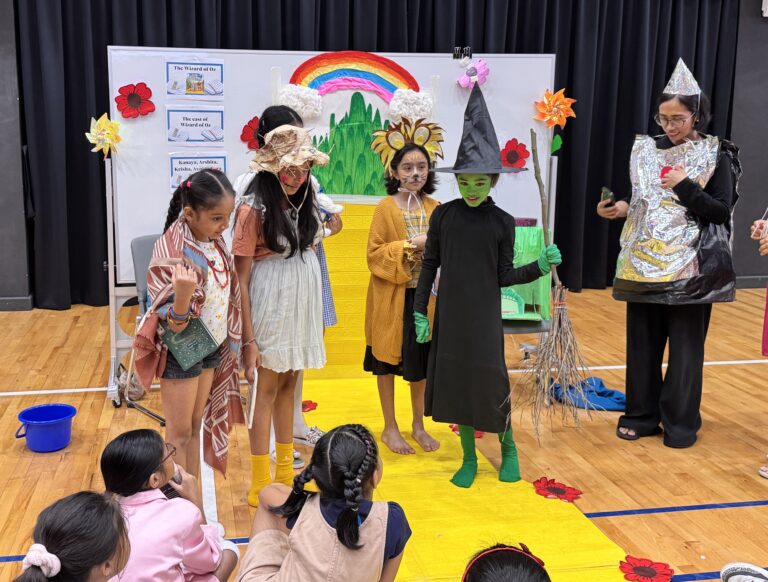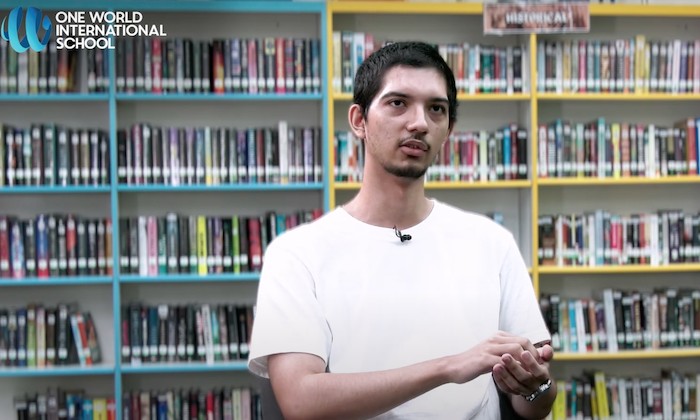(要阅读本文的中文版本,请使用屏幕左下角的翻译工具。)
If your family is relocating from China to Singapore, you are likely preparing for the transition. For your child, there is a lot to consider as they join a new school, which is why it’s important to select an international school in Singapore that can offer them a nurturing and supportive environment as well as a rigorous educational experience.
At One World International School in Singapore, we provide Chinese students with the support they need as they transition from the Chinese National Curriculum to our pathway that spans the IB PYP, Cambridge IGCSE and IBDP. By combining the power of holistic education with the advantages of personalised pastoral care, we are able to uniquely situate your child for success in their new school environment.
Addressing Rigorous Academic Standards
The Chinese National Curriculum (CNC) is known worldwide for its high academic standards and rigorous coursework. The emphasis on high marks and academic achievements makes Chinese students particularly studious, which can prepare them for a transition to any curriculum.
Described as a comprehensive curriculum, the Chinese National Curriculum encompasses:
- 6 Years of Primary School
- 3 Years of Middle School (Lower Secondary)
- 3 Years of High School (Upper Secondary)
By law, Chinese students are required to complete 9 years of schooling, which includes both primary and middle school (lower secondary), and many students go on to complete high school or upper secondary school.
The CNC is an interdisciplinary curriculum that is broken down into learning domains, which include:
- Ethics and Rule of Law
- Chinese
- Mathematics
- English
- History, Geography
- Science
- Physics, Chemistry, Biology
- Information Technology
- Physical Education and Health
- Art
- Labor
- Integrated Practical Activities
While high academic standards and achievements are a priority within this curriculum, it has recently been adapted and improved to become more student-centric. The evolving curriculum has allowed students to go beyond fact-finding and memorisation, and actively work on core competencies — such as critical thinking and problem-solving — that will help them succeed in all areas of their lives.
Competencies that are emphasised as part of the Chinese National Curriculum include:
- Social Responsibility
- Civic Pride
- International Awareness
- Culture and Humanity
- Science and Technology
- Aesthetics
- Innovations
- Learning to Learn
It is to be noted this varies from school to school, as different types of institutions follow different educational approaches. For instance, government schools might prioritise specific subjects, whereas language and vocational schools may place greater focus on areas like social responsibility or innovation. Overall, China’s curriculum is undergoing a transformation, with increasing attention being given to personalised learning in the coming years.
The Difference Between the Chinese Curriculum and the IB Curricula at OWIS
While the CNC has been revised and improved to emphasise the development of critical soft skills that 21st-century students need to succeed, there are still many differences between the CNC and the IB.
The IB pathway is broken down similar to the Chinese National Curriculum:
- The IBPYP — A primary school programme designed for students between the ages of 3 and 12.
- The IB Middle Years Programme — A middle school programme designed for learners between 13 and 15 years old.
- The IBDP — An upper secondary programme designed for students between the ages of 16 and 19.
(OWIS offers the IB PYP and IBDP, with the Cambridge IGCSE serving as a seamless bridge between the two.)
While IB programmes support academic development and encourage students to challenge themselves as they complete the rigorous coursework, unlike the CNC, it is not solely focused on performance and academic achievement. Rather, this inquiry-led, skills-based curriculum provides students with the freedom to ask questions, seek solutions and personalise their educational experience to accommodate their learning style.
Within the IBPYP, primary school students enjoy a hands-on, skills-based education in which they have the freedom to ask questions and engage in discussions with their peers. The IBPYP includes six subject areas:
- Language
- Social Studies
- Mathematics
- Arts
- Science
- Personal, Social and Physical Education
Agency and autonomy are emphasised as part of the IBPYP, allowing students to feel invested in their educational experience.
At the upper secondary level, within the IBDP, students enjoy an immersive and rigorous curriculum which focuses on the following subject areas:
- Studies in Language and Literature
- Language Acquisition
- Individuals and Societies
- Sciences
- Mathematics
- Arts
IBDP students also have to complete the DP Core, which includes:
- Creativity, Activity, Service
- Theory of Knowledge
- Extended Essay
Ultimately, the IBDP is a skills-based curriculum that organically supports high academic achievement while still giving students the freedom to have agency over their educational experience.
The Difference Between the Chinese Curriculum and the Cambridge Curricula
In contrast to the CNC, which has a knowledge-intensive approach, Cambridge IGCSE is an internationally recognised curriculum emphasising critical thinking, inquiry-based learning, and flexibility. It offers a broad subject range, including humanities and creative subjects such as Art, Music and Drama, with assessment through coursework and exams. The Cambridge IGCSE prepares students for global education pathways, such as IB DP.
Blending a Rigorous Curriculum With a Holistic Approach
At OWIS, we pride ourselves on balancing high academic standards with a holistic approach to learning. By relying on the IB, we give our students voice and choice in their education, which helps them to feel included, invested and supported at our school. We believe that it’s important to address the personal, physical, social and emotional needs of our students so that they can reach their highest potential.
Navigating Language Challenges
The CNC is primarily taught in Mandarin in government schools in China, which is distinctly different from the IB, which is an English-based curriculum. At OWIS, all our core courses are taught in English, which may be challenging for students who are accustomed to learning their lessons in Chinese.
Fortunately, at OWIS, we have significant experience helping students from a wide range of cultures and backgrounds. We can help Chinese students easily transition to an English-based curriculum.
Strategies for Adapting to an English Language Curriculum
Students who are transitioning from the CNC to the IB will find these strategies helpful for adapting and navigating language challenges:
- Begin reading and writing in English before the move to become accustomed to the language differences.
- Start listening to English music in your free time to become more familiar with the language, and to enjoy it in a new way.
- Develop a routine that allows you to slowly adapt to this new learning environment.
- Partner with other Chinese students at the new school to practise English and navigate any challenges that you might be having with the new curriculum.
You may be surprised by how quickly and easily your child adapts to an English-based curriculum. Many students find that within a few weeks or months, they can effortlessly navigate their coursework and complete their studies in English.
Language Support Resources for Students
Teachers and instructors at OWIS frequently work with new foreign language learners. Our international school in Singapore is truly a melting pot, bringing together students from a wide range of countries and backgrounds. As a result, we offer extensive support for students who are learning to adapt to an English-based curriculum.
Some of the ways that we support our new foreign language learners include:
- English support programmes for students who are new to the language, which include both a pull-out programme and an immersive, short term programme called the Academic English Prep Programme.
- Providing students with a baseline assessment to determine where their language skills are and how we can personalise the learning experience.
- Giving students an opportunity to study additional languages other than English. Chinese students, for instance, have the opportunity to continue to study Mandarin.
- Incorporating technology into the learning experience to make the transition to English-based instruction as seamless as possible.
- Including families in the language learning experience. We often encourage parents to read with their children so that everyone can become more familiar and comfortable with the English language.
Building Cross-Cultural Competence
Perhaps one of the most significant benefits of making an international move with your child is that it allows them to develop cross-cultural competence in an immersive way. By enrolling your child at an international school in Singapore, such as OWIS Nanyang or OWIS Digital Campus, you will be allowing them to enjoy a multicultural environment in which all cultures, backgrounds, religions and beliefs are celebrated equally.
Students who are exposed to a wide range of people and have the opportunity to enjoy diversity in their everyday lives are going to become more culturally aware and responsible adults, which is critical in an ever-growing, global economy. By learning new languages, meeting new friends from other countries and enjoying an internationally-focused curriculum, Chinese students will benefit in both the short and long term.
The Importance of Engaging in Global Activities and Events
At an international school in Singapore, your child will have the opportunity to engage in global activities and events that will broaden their horizons and open their eyes to new lifestyles, ideas, cultures and traditions. These extracurricular activities and special events not only help to improve their overall cultural competence but also allow them to feel more connected to their school community.
Many of these events are open to both students and their families, giving everyone in your household the opportunity to become an integral part of the OWIS community. When you feel that you have the support of other parents and students in school, you will find that the transition to a new country and a new school is much easier than you could have anticipated.
Discover the Power of an Well-Rounded, World-Class International Education at OWIS in Singapore
While still holding students to the highest academic standards, and encouraging them to continue challenging themselves, we pride ourselves on our holistic approach to education at One World International School.
Learn more about transitioning from the Chinese Curriculum by speaking with our Admissions Team, which comprises Chinese speakers.
(This blog has been created with inputs from Ms Sui (Gina) Xin Ying, Assistant Business Development Manager, One World International School.)
(This blog post is for informational purposes only. While we strive to provide accurate and up-to-date information, details may change over time. We recommend verifying any important information directly with the relevant sources.)










